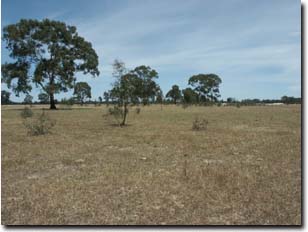2.2.11.2 - Remnant Vegetation
Return to Main Menu | Return to Step 2 | Return to Step 2.2.11 | Next Step
| Removal of remnant vegetation is discouraged under the Victoria’s Native Vegetation Management Framework. Remnant vegetation, including trees, shrubs, understorey and grasses, are important features of the landscape. You must obtain a planning permit from your council before removing native vegetation. “Offset” planting of multiples of native trees (typically 200 per remnant tree removed) is likely to be a condition of a permit.
|  Remnant Vegetation |
Note that a permit will not automatically be given. Failure to obtain a permit prior to removing native vegetation can result in significant penalties, including fines and reinstatement works. Fines of up to $130,000 can be imposed - fines of up to $45,000 have been imposed, plus costs, plus reinstatement works. Such judgements have received considerable publicity.


